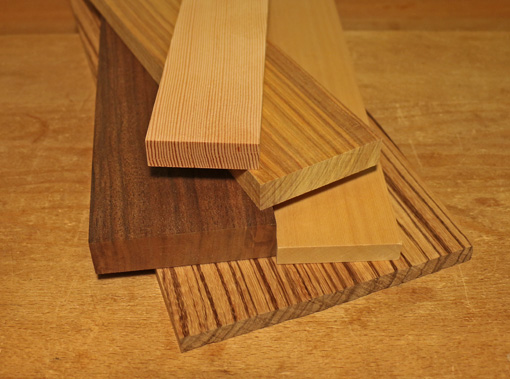
The visual beauty of wood, its warmth to the touch, and lovely sound properties are so enticing that we might neglect the variety of pleasing scents many species have to offer. Smells are registered deep in the primitive brain in the limbic system where they are associated with memories and emotions, so this is a powerful aspect of wood.
When recently working with some nice quartersawn Douglas fir, the aroma brought me back to my youthful days of projects in humble fir plywood and the simple joy of making things. Continuing to nowadays, the particular scent of a species released by its sawdust and shavings is part of the experience of woodworking and thus, in my mind, part of the personality of the piece.
I think of, as examples, the shop being filled with the aromas of walnut or spicy Port Orford cedar or even the unmistakable horse barn smell of zebrawood. Using canarywood recently for the first time was a pleasant olfactory surprise.
Unfortunately, the aromas then usually disappear under layers of finish, unavailable to the end user of the piece. Of course, with most work, especially things like tables, there’s no getting around that. However, in some casework there is an opportunity to add a wonderful aspect to the piece that will be enjoyed for years to come.
Consider using aromatic woods, left unfinished, for interior drawer parts, case back panels or partitions, and box linings. The “cedars,” sassafras, and even pine are some options.
By the way, I avoid using oil or oil-varnish finishes on the interior of cabinetwork. A light application of a hard-drying varnish or thin shellac are better choices.
Pictured above are, from top to bottom, quartered Doug fir, canarywood, Claro walnut (left), Port Orford cedar (right), and zebrawood. But you have to meet the woods in person for the full experience.


Great post, Rob!
I have some sassafras in the shop I was going to use to make some boxes, once I get a few other things sorted out. Generally, I finish the inside with a coat of shellac, but maybe I’ll just leave it unfinished and see what it smells like.
In fact, might be fun to do a whole series of boxes from different strongly-scented woods and leave the insides unfinished (maybe something to give to my son’s Montessori school for a scent lesson?).
I can’t say I’m familiar at all with the Port Oxford cedar. What is it like?
I have two favorite scented woods – West Indies Satinwood (Zanthoxylum flavum, not the stuff from South America commonly sold as Satinwood), which smells like coconut oil suntan lotion and reminds me of the beach, and Spanish Cedar (which is neither Spanish nor cedar), with that wonderful spicy scent making it so popular for lining humidors.
The former is hard to get, being overharvested and decimated by the British in the 19th and 20th centuries. But I don’t let that stop me. I get my Satinwood in small batches, from a resident of Puerto Rico who occasionally finds old posts or beams of it when he’s asked to tear down a shed or outbuilding for a friend. Recycled wood sourcing at its best!
I won’t give away my source, but if you want a few pieces, I’d be happy to send you some. :) It’s a wonderful smell and fun to work with.
Hi Ethan,
I think you’ll like the sassafras. Port Orford cedar is best quartersawn which gives it a plain, zen-like look. The spicy aroma is fairly strong but pleasant. There’s a link in this post to more info.
Please email me regarding the West Indies satinwood; sounds interesting and maybe we can make a trade. Thanks.
Rob